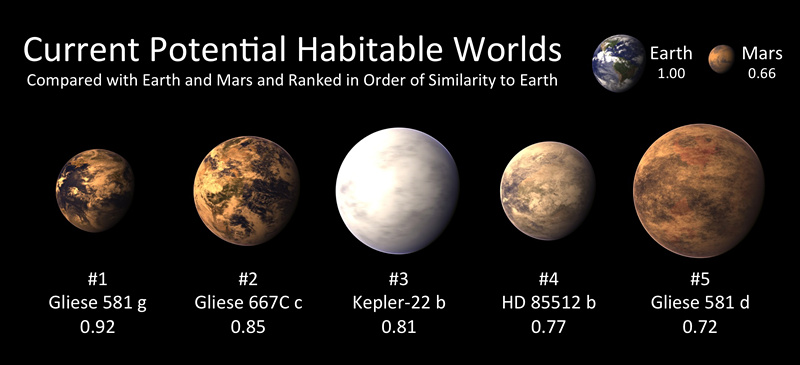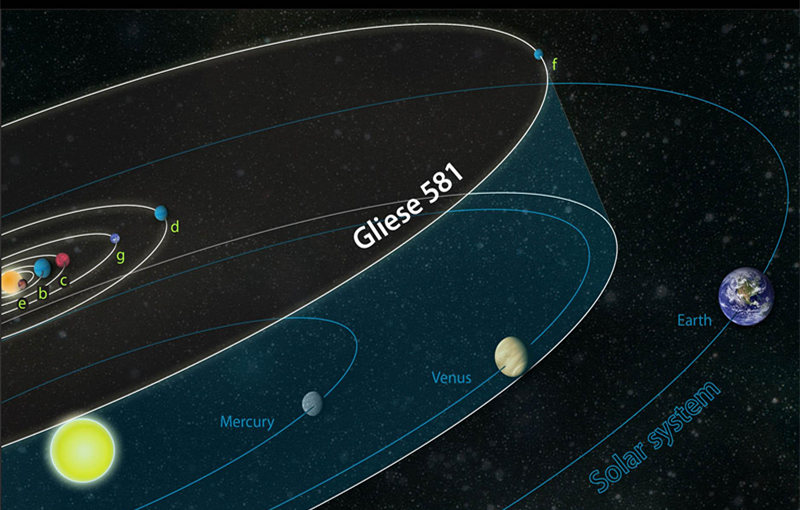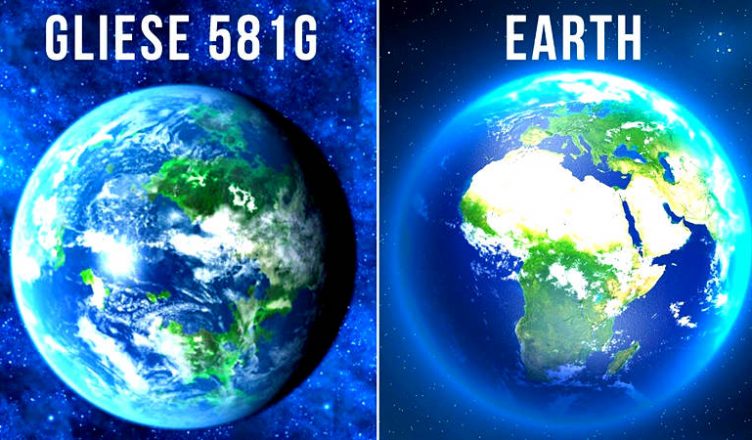Can you believe it? There exists such an exoplanet in the universe that not only bears the highest resemblance to Earth but also allows astronomers to conclude with 100% certainty that it harbors life. So, what kind of planet is this that can lead scientists to such a conclusion? Let’s delve into the extraordinary exoplanet known as Gliese 581g.
Discovering Gliese 581g: Hope for Extraterrestrial Life
Every time we gaze up at the starry sky, we ponder the multitude of stars and distant celestial bodies. We can’t help but wonder whether there is life elsewhere in the universe. After all, as the only known civilization in the vast cosmos, humanity has been alone for far too long. Moreover, the observable universe has a diameter of 93 billion light-years, and the idea of being the sole civilization in such a vast expanse is somewhat hard to accept.
However, just 20 light-years away from us, scientists have found a planet remarkably similar to Earth. This planet is often referred to as a “super-Earth.” What’s truly exhilarating is that it is highly likely to host life similar to ours on its surface. This planet is none other than Gliese 581g. On September 29, 2010, Gliese 581g was first unveiled to the world, marking the culmination of 11 years of observation at the Keck Observatory in Hawaii.

The parent star of Gliese 581g, Gliese 581, is a red dwarf star located in the constellation Libra. Red dwarf stars have relatively low surface temperatures, and they appear somewhat red in color, much like our closest neighbor, Proxima Centauri. The reason it’s called Gliese 581g is due to the naming convention used by astronomers when designating planets. Planets are named based on the order of their discovery around a given parent star. “Gliese” is the specific letter assigned to the parent star, and the first discovered planet is designated with “B.” For example, the well-known exoplanets Kepler-22b and Kepler-452b were the first planets discovered around their respective parent stars. Subsequently discovered planets are named with letters in alphabetical order, such as C, D, E, F, and G. Gliese 581g is the sixth planet discovered around its parent star, hence the “g” in its name.
Exploring Gliese 581g: A Potential Extraterrestrial Habitat
Unlike celestial bodies observed in the past, Gliese 581g stands out as the exoplanet not only with the highest potential for planetary migration but also possesses numerous similarities to Earth. It’s a planet where the likelihood of life is very high, so much so that its discoverer, Stephen Vogt, boldly claims that the possibility of life on Gliese 581g reaches 100%. But why is he so confident about the presence of life on this planet?
Firstly, Gliese 581g has a mass roughly 3.1 times that of Earth and a volume about 1.2 times that of our planet, making it an undisputed super-Earth. Its surface is composed of rock, and scientists have even found that it has the same gravitational force as Earth, with a gravity strength twice as strong as Earth’s. This implies that Gliese 581g may have a stable atmosphere. The presence of an atmosphere not only shields the planet from cosmic radiation but also has the potential to form clouds and produce precipitation, maintaining surface temperatures.

Secondly, Gliese 581g resides in the habitable zone of its parent star. It’s worth noting that one of the main reasons for life on Earth is its location in the most suitable habitable zone of the solar system. Planets like Venus and Mars, while being terrestrial, have vastly different environments from Earth, highlighting the importance of the habitable zone. It’s worth noting that Gliese 581g’s parent star, Gliese 581, is a red dwarf star, emitting significantly less thermal energy than the Sun. As a result, Gliese 581g receives only about 30% of the heat that Earth does. Scientists estimate that the surface temperature of Gliese 581g will remain stable between a chilly -30 degrees Celsius and -12 degrees Celsius.
Interestingly, scientists have also observed that Gliese 581g is tidally locked to its parent star, just like the Moon is to Earth. Due to tidal locking, one side of Gliese 581g always faces the star, while the other side is in perpetual darkness. This means there are no day and night cycles or seasons on the planet. The temperature on the illuminated side may reach several tens of degrees, while the dark side can be extremely cold, dropping to over -100 degrees Celsius. If life were to exist on Gliese 581g, the terminator region, the boundary between the illuminated and dark hemispheres, would be the most favorable location. It is here that liquid water is most likely to exist, and the temperatures are relatively suitable for life.
Gliese 581g: A Potential Star in the Search for Extraterrestrial Life
Scientists believe that its parent star, Gliese 581, is an M-type red dwarf star, smaller than the Sun, and with a shorter orbital period, producing a much lower spectrum of radiation than the Sun. In such an environment, the evolutionary process of Gliese 581g would differ from that of Earth. Its orbit is closer to the star than Earth’s, subjecting it to more intense radiation and resulting in higher surface temperatures. It rotates more slowly, taking about 37 Earth days to complete one orbit, and this slower rotation might lead to a more stable climate on the planet. Furthermore, scientists speculate that Gliese 581g’s interior may be rich in water, molten rock, and volcanic activity, which could impact its evolution.

Several characteristics of Gliese 581g make it a promising candidate for the search for potential life. Firstly, its proximity and size to Earth create the possibility of a habitable environment. Secondly, its higher metallicity could make it more supportive of life, possibly featuring a surface with high-quality rock. Lastly, scientists have noted that its orbital rotation and gravitational interactions with its parent star result in minimal seasonal variations, similar to the Earth’s climate. Additionally, if Gliese 581g possesses a magnetic field, it may help shield the planet from solar winds and radiation, increasing the likelihood of life.
However, there is currently no definitive evidence of life on Gliese 581g. In 2010, scientists discovered a nearby water planet around Gliese 581, leading many to believe that Gliese 581g could have evolved water, which is a necessary condition for life. Furthermore, scientists are investigating the potential presence of other life forms, such as the detection of compounds like methane. While there is currently no concrete evidence of life on Gliese 581g, its numerous characteristics make it an important subject of research in the quest for extraterrestrial life.
The Importance of Gliese 581g to Humanity:
Why the Study of Planets like Gliese 581g is Crucial? First and foremost, studying planets like Gliese 581g is immensely important because it can help us better understand the evolutionary processes of Earth and other similar planets. Secondly, it can enhance our understanding of the existence of life in the cosmos. By researching these planets, we can gain a better understanding of potential life forms and their habitats. Ultimately, by studying these planets, we can expand our knowledge of the universe and life, continually pushing the frontiers of human science, and providing us with more possibilities for the future.
For us as humans, the study of Gliese 581g, similar planets, and other celestial bodies can lead to a better comprehension of the laws of nature and scientific advancements. This knowledge can help address the problems humanity faces on Earth, such as global warming, environmental pollution, and more. Learning from the ecosystems of other planets can provide us with new insights and methods for solving these issues.

END:
As we continue to advance our technology and control over space, the research of these planets and celestial bodies can offer new perspectives and ideas for future space exploration and discoveries in various fields. However, it is important to emphasize that during the research process, we must respect life and its environment. While Gliese 581g is one promising location for the search for extraterrestrial life, the study should be conducted with humility, caution, and respect, with the primary goal of protecting life and its surroundings. Although the research is meaningful, it should not be pursued blindly based on expectations.
Furthermore, we should not rely solely on the quest for extraterrestrial life. The development of robots, AI, and other artificial intelligence and robotic technologies can enhance our efficiency in exploring the universe. Deepening our understanding through these studies can also lead to diversified and multifaceted approaches to the search for life. In conclusion, the research on Gliese 581g holds significant importance in our quest to understand the universe and the existence of life. While there is currently no definitive evidence of life on this planet, our research will continue to open new pathways for understanding extraterrestrial life, positively impacting human scientific development and our future.
More UFOs and mysterious files, please check out our YouTube channel: MysFiles
What NASA found on Mars in 2023? New Evidence of life on Mars?








